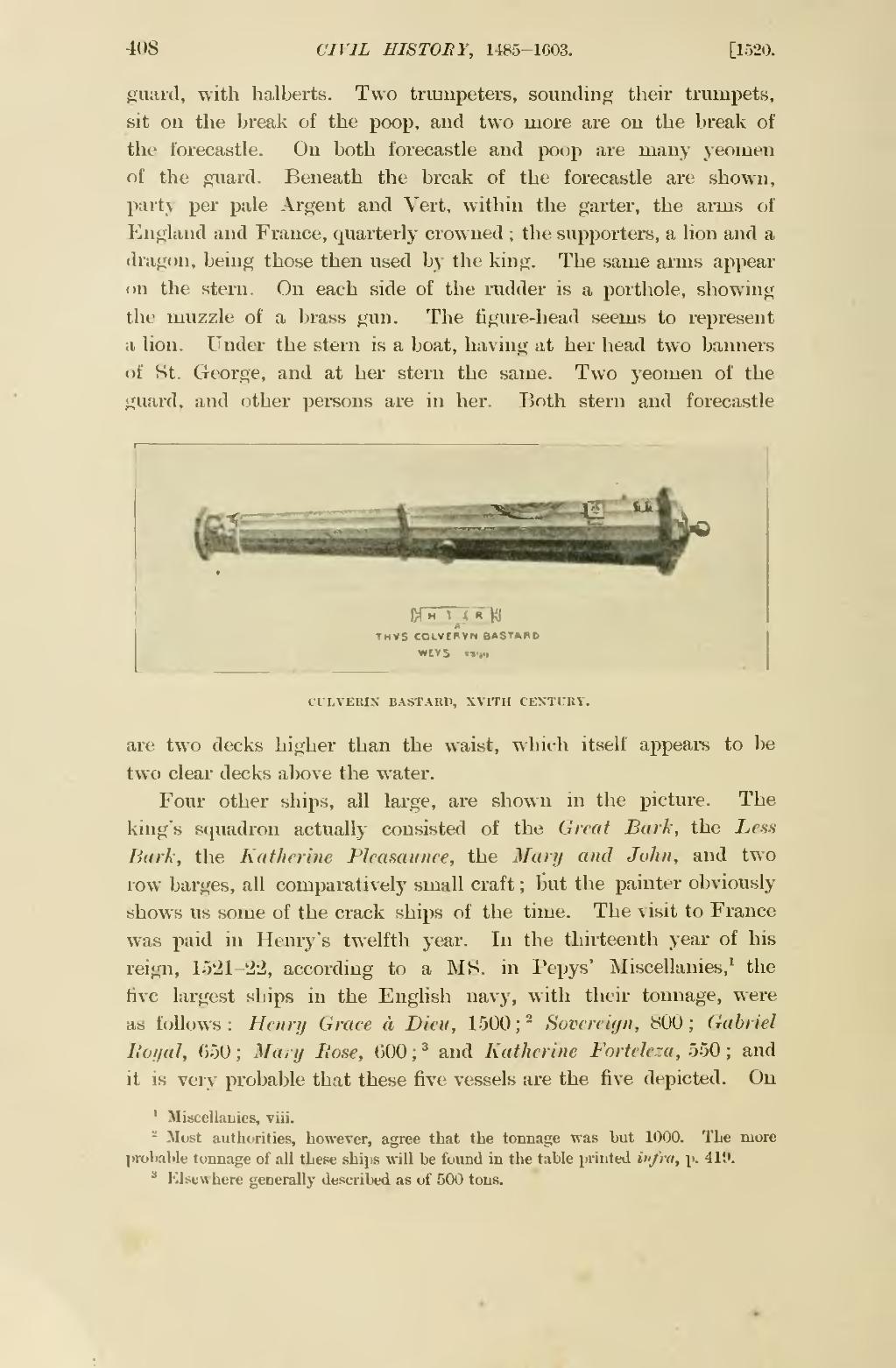guard, with halberts. Two trumpeters, sounding their trumpets, sit on the break of the poop, and two more are on the break of the forecastle. On both forecastle and poop are many yeomen of the guard. Beneath the break of the forecastle are shown, party per pale Argent and Vert, within the garter, the arms England and France, quarterly crowned; the supporters, a lion and a dragon, being those then used by the king. The same arms appear on the stern. On each side of the rudder is a porthole, showing the muzzle of a brass gun. The figure-head seems to represent a lion. Under the stern is a boat, having at her head two banners of St. George, and at her stern the same. Two yeomen of the guard, and other persons are in her. Both stern and forecastle are two decks higher than the waist, which itself appears to be two clear decks above the water.

CULVERIN BASTARD, XVITH CENTURY.
Four other ships, all large, are shown in the picture. The king's squadron actually consisted of the Great Bark, the Less Bark, the Katherine Pleasaunce, the Mary and John, and two row barges, all comparatively small craft; but the painter obviously shows us some of the crack ships of the time. The visit to France was paid in Henry's twelfth year. In the thirteenth year of his reign, 1521-22, according to a MS. in Pepys' Miscellanies,[1] the five largest ships in the English navy, with their tonnage, were as follows: Henry Grace à Dieu, 1500;[2] Sovereign, 800; Gabriel Royal, 650; Mary Rose, 600;[3] and Katherine Forteleza, 550; and it is very probable that these five vessels are the five depicted. On

